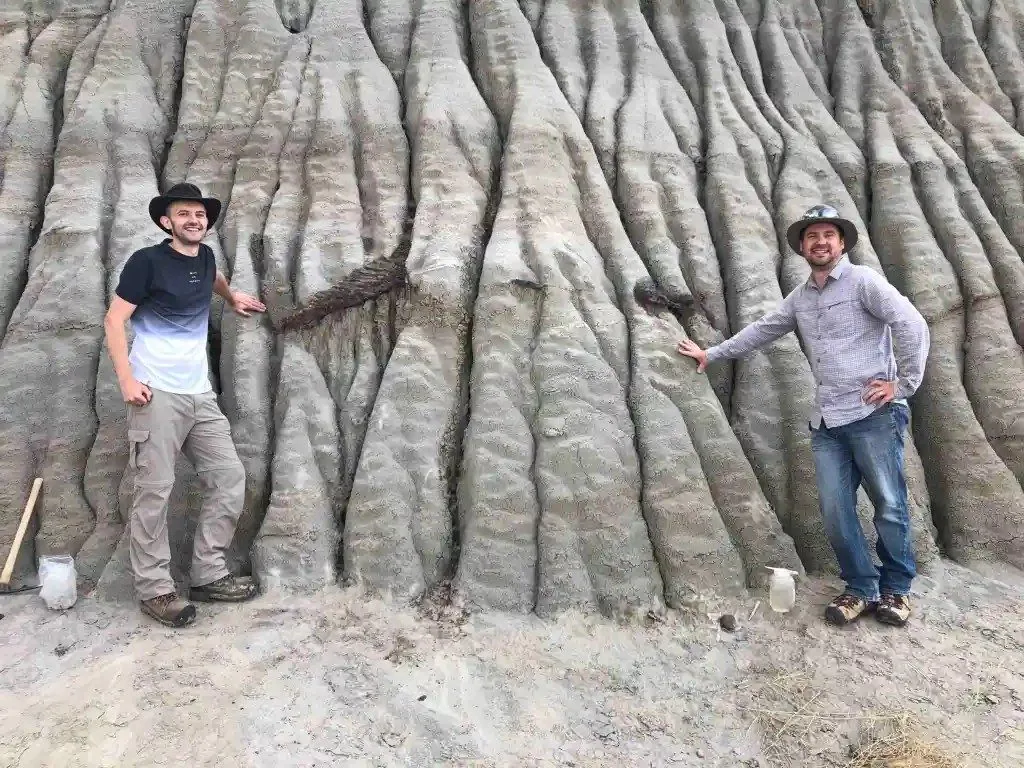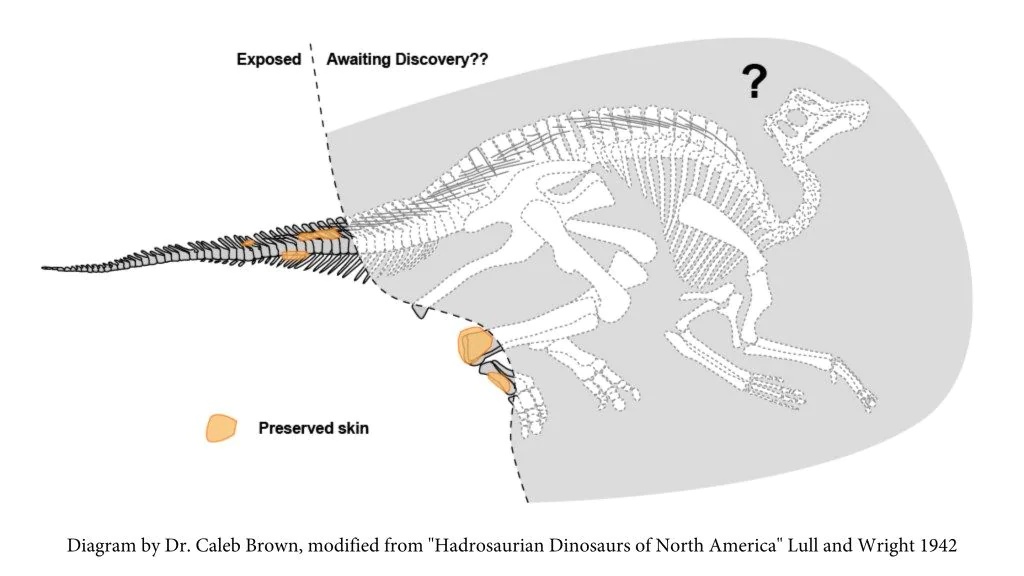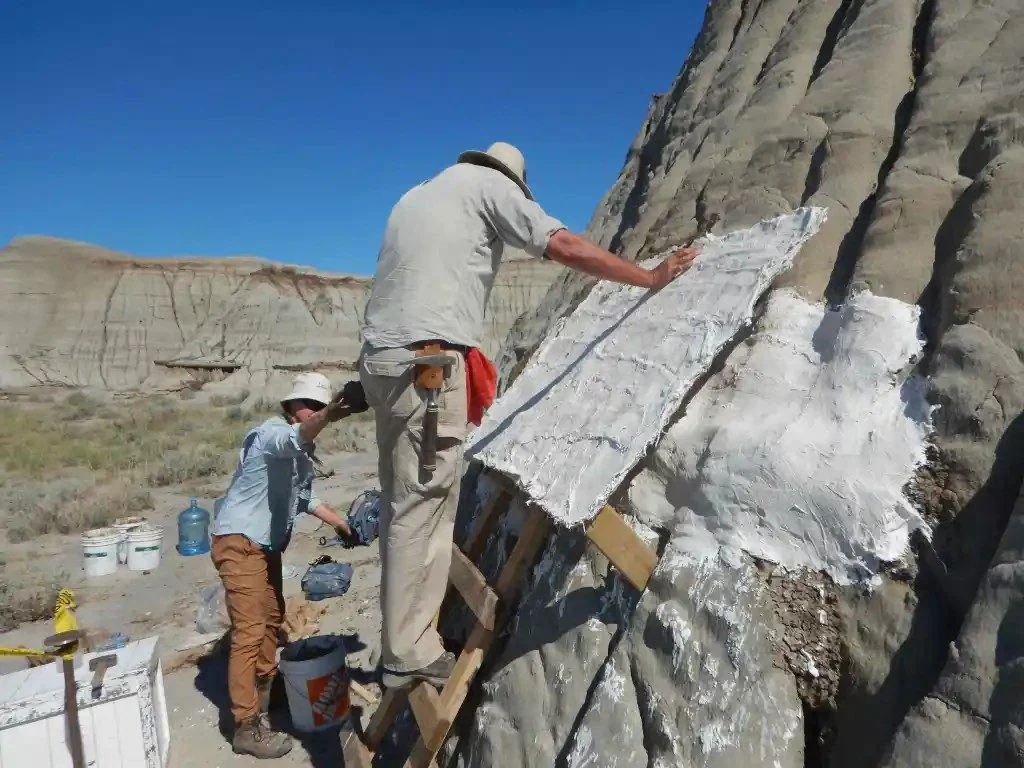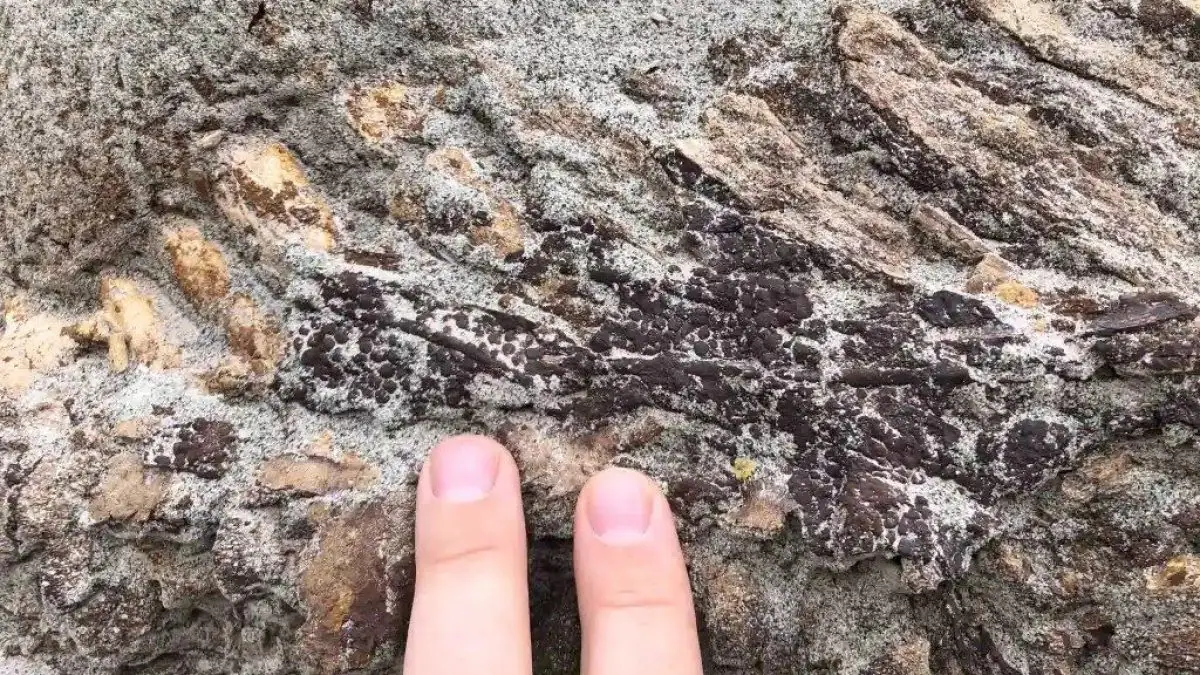The skin and tail of a dinosaur emerge from the rock: perhaps it hides a fossil of absolute beauty
The remains of a dinosaur have been found in the heart of a Canadian paleontological site; the rock could hold a fossil of insane quality.
In a paleontological site in Canada, the outcropping remains of a dinosaur part of the cordial Right foot and even some layers of skin. The latter are elements that are very rarely recovered by scientists, therefore they are very valuable. View the position of the animal and the quality of the finds identified, exposed to the elements due to erosive phenomena, according to the scientists inside the rock could be kept a fossil of shocking beauty and an extraordinary state of conservation.
The dinosaur could indeed be intact, but above all, there could be a skull covered with skin. If so, we would be facing one of the most beautiful and interesting fossils ever identified, a veritable gold mine of information for paleontologists.
 dinosaur's tail and foot emerge from the rock. Credit: Royal Tyrrell Museum of Paleontology" width="1024" height="768" />
dinosaur's tail and foot emerge from the rock. Credit: Royal Tyrrell Museum of Paleontology" width="1024" height="768" />The dinosaur's tail and foot emerge from the rock. Credit: Royal Tyrrell Museum of Paleontology
The first to discover the fossil was Teri Kaskie, a volunteer who joined a research expedition to help scientists and students locate new fossils. Every year thousands of volunteers pour into the "Alberta Provincial Dinosaur Park”, In Canada, known to be one of the richest places in the world for the presence of the fossils of these wonderful prehistoric animals. The site selected a World Heritage Site by UNESCO refers to the Late Cretaceous and hosts beyond 40 specie this lived between 77 and 75 million years ago, just before the extinction (of non-avian dinosaurs) caused by the fall of the asteroid chic club 66 million years ago.

The possible position of the animal in the rock. Credit: Royal Tyrrell Museum of Paleontology
The discovery took place last year, during an international exploratory mission led by scientists from the Royal Tyrrell Museum of Paleontology, the University of Reading, and the Australian University of New England (UNE). The expedition was scheduled for 2019 but was postponed to 2021 due to the pandemic of COVID-19. During the exit Teri Kaskie noticed the dinosaur's remains emerging from a hill, thus starting one of the most exciting paleontological missions of recent years.
Some dinosaurs had navels, a 125-million-year-old fossil reveals

Illustration of a hadrosaur. Credit: Julius Csotonyi, Royal Tyrrell Museum of Paleontology.
Scientists have determined that the dinosaur is a specimen of hadrosaurus, a relatively interesting family of ornithischian dinosaurs since they are among the most common and abundant. But this particular fossil has several elements that make it potentially extraordinary. In addition to the presence of the skin and the fact that the fossil of the entire animal could be hidden inside the rock (paleontologists normally have to put the pieces together like a puzzle), the small size of the specimen suggests that it could be a completely new species. Or more simply it could be an immature able to help scientists better understand the growth of these dinosaurs since "duck beak”.

Work to extract the fossil. Credit: Royal Tyrrell Museum of Paleontology.
It will take several months - or even several seasons - to fully extract the fossil from the rock, but what is kept inside could truly revolutionize paleontology. It is not excluded that the fossil may recall that of the wonderful nodosaur also found in Canada by researchers at the Royal Tyrrell Museum of Paleontology. All that remains is to wait for the excavations to be completed and discover what secrets are hidden in the rock.



